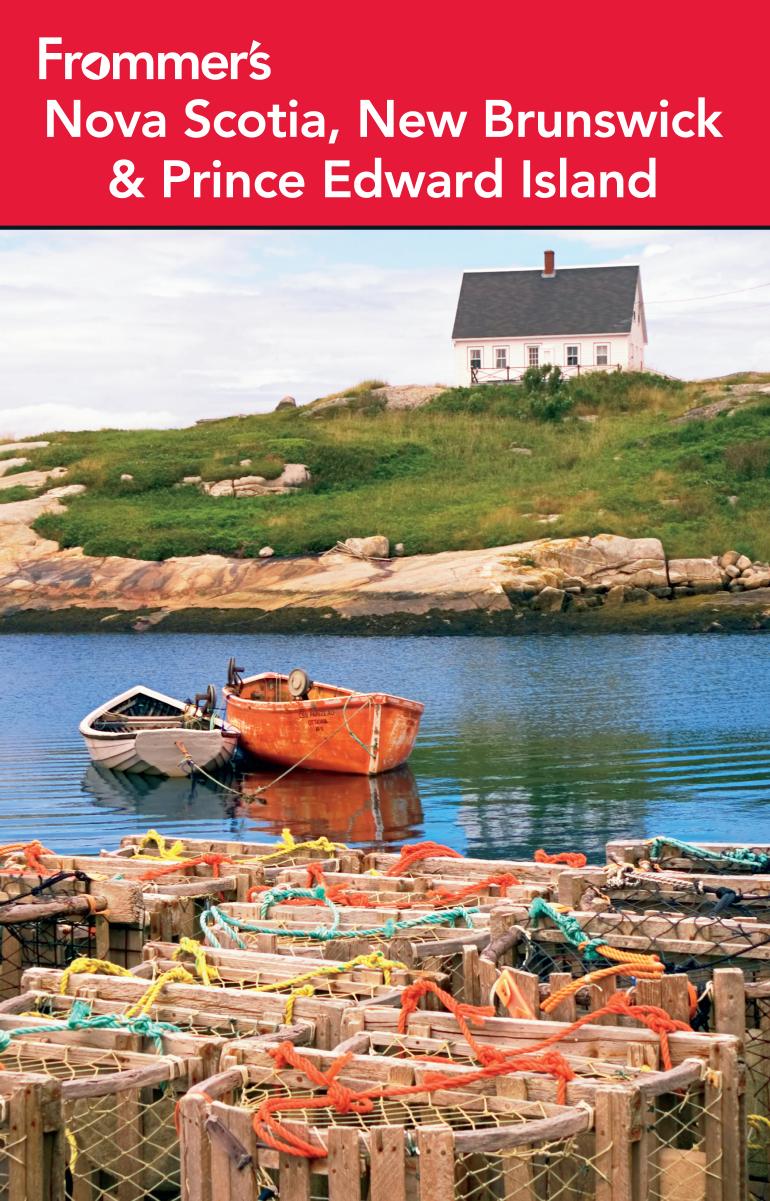Frommer's Nova Scotia, New Brunswick and Prince Edward Island by Julie Watson

Author:Julie Watson
Language: eng
Format: epub, pdf
Publisher: John Wiley & Sons, Ltd.
Published: 2012-04-18T16:00:00+00:00
Cape Breton Highlands National Park ★★★
Cape Breton Highlands National Park
Cape Breton Highlands National Park is one of the two crown-jewel national parks in Atlantic Canada (Gros Morne in Newfoundland is the other). Covering nearly 1,000 sq. km (370 sq. miles) and stretching across a rugged peninsula from the Atlantic to the Gulf of St. Lawrence, this park is famous for its starkly beautiful terrain. It also features one of the most dramatic coastal drives in North America. One of the great pleasures of this park is that it holds something for everyone, from tourists who prefer to sightsee from the comfort of their cars to those who prefer backcountry hiking in the company of bear and moose.
The mountains of Cape Breton are probably unlike those you’re familiar with elsewhere. The heart of the park is fundamentally a huge plateau; in the vast interior, you’ll find a flat, melancholy landscape of wind-stunted evergreens, bogs, and barrens. This is called the “taiga,” a name that refers to the zone between tundra and the northernmost forest. In this largely untracked area you might find 150-year-old trees that are still only knee-high.
It’s the park’s edges that really capture your attention, though. On the western side of the peninsula, the tableland has eroded right into the sea, creating a dramatic landscape of ravines and ragged, rust-colored cliffs pounded by the ocean. The Cabot Trail ★★★, a paved road built in 1939, winds dramatically along the flanks of these mountains, offering extraordinary vistas and camera shots at every turn. On the park’s eastern flank—the Atlantic side—the terrain’s a bit less spectacular, but those lush green hills still offer a backdrop that’s exceptionally beautiful.
Note that this section of the book focuses only on the park proper, which offers no lodging or services other than campgrounds. You can find limited lodging and restaurants in the handful of villages that ring the park, however. See the previous section, for detailed information about local inns and hotels in the various towns (such as Chéticamp and Ingonish) near the park’s boundaries.
Essentials
Getting There Access to the park is via the Cabot Trail, which is very well marked by provincial signage. The entire loop is about 305km (190 miles), though the section that passes through the national park—from the entrance at Chéticamp to the one at Ingonish—is only about 105km (65 miles). You’ll drive slowly to take in the vistas. Although the loop can be done in either direction, I would encourage you to drive it in a clockwise direction; the visitor center in Chéticamp offers a far more detailed introduction to the park.
Visitor Information Two visitor information centers are located at either end of the park, in Chéticamp and Ingonish. Both are open daily from mid-May through mid-October, 8am to 8pm in summer (Jul–Aug) and 9am to 5pm during the shoulder seasons. The Chéticamp center has much more extensive information about the park, including a slide presentation, natural history exhibits, a cool large-scale relief map, and a very good bookstore specializing in the natural and cultural history.
Download
Frommer's Nova Scotia, New Brunswick and Prince Edward Island by Julie Watson.pdf
This site does not store any files on its server. We only index and link to content provided by other sites. Please contact the content providers to delete copyright contents if any and email us, we'll remove relevant links or contents immediately.
| Alberta | British Columbia |
| Manitoba | New Brunswick |
| Newfoundland | Nova Scotia |
| Ontario | Prince Edward Island |
| Quebec | Saskatchewan |
| Territories |
Canadians by Roy MacGregor(1157)
Chris Chelios by Chris Chelios(1052)
109 Walks in British Columbia's Lower Mainland by Mary Macaree(1010)
Stone by Stone by Liz Bryan(961)
Berlin Travel Guide by Lonely Planet(919)
I Hear She's a Real Bitch by Jen Agg(908)
Germany Travel Guide by Lonely Planet(895)
Liquor, Lust and the Law by Aaron Chapman(889)
From the Tundra to the Trenches by Eddy Weetaltuk(885)
Moon Atlantic Canada by Andrew Hempstead(839)
105 Hikes in and Around Southwestern British Columbia by Stephen Hui(837)
The Prince by unknow(833)
1,000 Places to See in the United States & Canada Before You Die by Patricia Schultz(828)
Uncle John's Bathroom Reader Plunges into Canada by Bathroom Readers' Institute(826)
Wine by Rod Phillips(818)
DK Eyewitness Top 10 Travel Guides Montreal & Quebec City by DK(798)
How to Move to Canada by Terese Loeb Kreuzer Carol Bennett(789)
Hidden Ontario by Terry Boyle(782)
50 Best Girlfriends Getaways in North America by Marybeth Bond(780)
